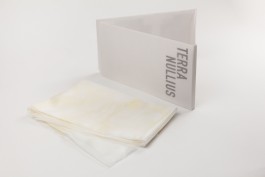
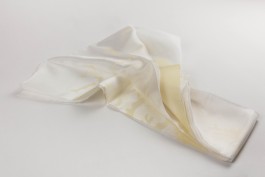
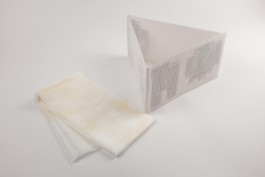
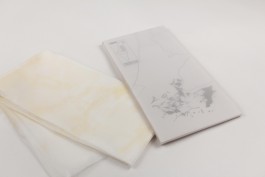
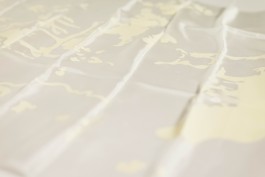
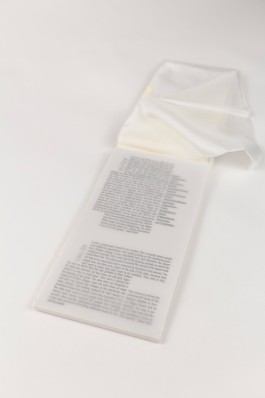
Kiefern, Dattelpalmen, Zedern, Olivenbäume,Weiden, Granatapfelbäume, Platanen, Eukalyptusbäume,Eichen, Johannisbrotbäume, Zypressen, Feigenbäume, Pinien, Mandelbäume, Akazien, Erdbeerbäume, Tamarisken und Terebinthen.
Ein Staat, eine Wüste und ein Wald, der entstehen soll. Genau da siedeln Menschen, deren Ziegen auf dem noch übrigen Grün grasen, seit Generationen. Der Klimawandel ist auch hier spürbar und daher breitet sich die Wüste weiter aus. Auch durch die grasenden Tiere, von denen die Menschen dort leben. Der Staat will mithilfe eines Vereins, deraus Spenden aus dem Ausland finanziert wird,die Ausbreitung der Wüste verhindern. Die Menschen, die dort siedeln, sind dem Staat ein Dorn im Auge, denn sie wollen nicht weg, nicht umgesiedelt werden. Sie wollen bleiben. Das Land, auf dem sie wohnen, wurde ihnen vor der Staatsgründungzugesprochen, jedoch haben sie es sichnicht offiziell eintragen lassen, um die Zahlung von Steuern zu umgehen. Ihre Landflächen werden für die Anpflanzung des Waldes beansprucht. DerStaat erkennt einen Großteil ihrer Dörfer nicht an, zeichnet sie nicht auf Landkarten ein und schließt die Dörfer nicht ans Strom- und Wassernetz an. Das Baumaterial für ihre Häuser wird ihnen vom Ausland gestellt. Täglich kommen Bagger der staatlichen Armee, die die Menschen von ihrem Land vertreiben und ihre Häuser zerstören, da den Menschen eine Baugenehmigung fehlt. Zuletzt kam es im Jahr 2019 zu diplomatischen Streitigkeiten, da der Staat das Baumaterial, das für die siedelnden Menschen gedacht war, versteigerte.
Diese kurze zusammenfassende Darstellung umreißt das umstrittene Thema der Beduinensituation in der Negev Wüste Israels und deren Bepflanzung. Die Karte basiert auf den Daten der „Negev Coexistence Forum for Civil Equality“.Stand 2022 –Eine Arbeit, die in Israel entstand.
Terra Nullius
Woodcut on silk, digital print on tracing paper | 2022 | 23x12cm
Pines, date palms, cedars, olive trees, willows, pomegranate trees, plane trees, eucalyptus trees, oaks, carob trees, cypresses, fig trees, pines, almond trees, acacia, strawberry trees, tamarisk and terebinths.
A state, a desert and a forest to be created. This is exactly where people have been settling for generations, their goats grazing on the remaining greenery. The climate change is also noticeable here and therefore the desert continues to spread. This is also due to the grazing animals on which the people there live. The state wants to prevent the spread of the desert with the help of an association that is financed by donations from abroad. The people who live there are a thorn in the side of the state, because they don't want to leave, they don't want to be resettled. They want to stay. The land they live on was granted to them before the foundation of the state, but they did not register it officially in order to avoid taxes. Their land is claimed for the planting of the forest. The state does not recognize a large part of their villages, does not mark them on maps and does not connect the villages to the electricity and water network. The building material for their houses is provided to them from abroad. Every day, excavators from the state army come to evict people from their land and destroy their houses because the people lack building permits. Most recently, diplomatic disputes arose in 2019 as the state auctioned off building materials meant for the settling people. This summary outlines the controversial issue of the Bedouin situation in Israel's Negev Desert and its planting. The map is based on data from the Negev Coexistence Forum for Civil Equality.
As of 2022 – A work that originated in Israel.






Holzschnitt auf Seide, Digitaldruck auf Transparentpapier | 2022 | 23x12cm
Kiefern, Dattelpalmen, Zedern, Olivenbäume,Weiden, Granatapfelbäume, Platanen, Eukalyptusbäume,Eichen, Johannisbrotbäume, Zypressen, Feigenbäume, Pinien, Mandelbäume, Akazien, Erdbeerbäume, Tamarisken und Terebinthen.
Ein Staat, eine Wüste und ein Wald, der entstehen soll. Genau da siedeln Menschen, deren Ziegen auf dem noch übrigen Grün grasen, seit Generationen. Der Klimawandel ist auch hier spürbar und daher breitet sich die Wüste weiter aus. Auch durch die grasenden Tiere, von denen die Menschen dort leben. Der Staat will mithilfe eines Vereins, deraus Spenden aus dem Ausland finanziert wird,die Ausbreitung der Wüste verhindern. Die Menschen, die dort siedeln, sind dem Staat ein Dorn im Auge, denn sie wollen nicht weg, nicht umgesiedelt werden. Sie wollen bleiben. Das Land, auf dem sie wohnen, wurde ihnen vor der Staatsgründungzugesprochen, jedoch haben sie es sichnicht offiziell eintragen lassen, um die Zahlung von Steuern zu umgehen. Ihre Landflächen werden für die Anpflanzung des Waldes beansprucht. DerStaat erkennt einen Großteil ihrer Dörfer nicht an, zeichnet sie nicht auf Landkarten ein und schließt die Dörfer nicht ans Strom- und Wassernetz an. Das Baumaterial für ihre Häuser wird ihnen vom Ausland gestellt. Täglich kommen Bagger der staatlichen Armee, die die Menschen von ihrem Land vertreiben und ihre Häuser zerstören, da den Menschen eine Baugenehmigung fehlt. Zuletzt kam es im Jahr 2019 zu diplomatischen Streitigkeiten, da der Staat das Baumaterial, das für die siedelnden Menschen gedacht war, versteigerte.
Diese kurze zusammenfassende Darstellung umreißt das umstrittene Thema der Beduinensituation in der Negev Wüste Israels und deren Bepflanzung. Die Karte basiert auf den Daten der „Negev Coexistence Forum for Civil Equality“.Stand 2022 –Eine Arbeit, die in Israel entstand.
Terra Nullius
Woodcut on silk, digital print on tracing paper | 2022 | 23x12cm
Pines, date palms, cedars, olive trees, willows, pomegranate trees, plane trees, eucalyptus trees, oaks, carob trees, cypresses, fig trees, pines, almond trees, acacia, strawberry trees, tamarisk and terebinths.
A state, a desert and a forest to be created. This is exactly where people have been settling for generations, their goats grazing on the remaining greenery. The climate change is also noticeable here and therefore the desert continues to spread. This is also due to the grazing animals on which the people there live. The state wants to prevent the spread of the desert with the help of an association that is financed by donations from abroad. The people who live there are a thorn in the side of the state, because they don't want to leave, they don't want to be resettled. They want to stay. The land they live on was granted to them before the foundation of the state, but they did not register it officially in order to avoid taxes. Their land is claimed for the planting of the forest. The state does not recognize a large part of their villages, does not mark them on maps and does not connect the villages to the electricity and water network. The building material for their houses is provided to them from abroad. Every day, excavators from the state army come to evict people from their land and destroy their houses because the people lack building permits. Most recently, diplomatic disputes arose in 2019 as the state auctioned off building materials meant for the settling people. This summary outlines the controversial issue of the Bedouin situation in Israel's Negev Desert and its planting. The map is based on data from the Negev Coexistence Forum for Civil Equality.
As of 2022, A work that originated in Israel.